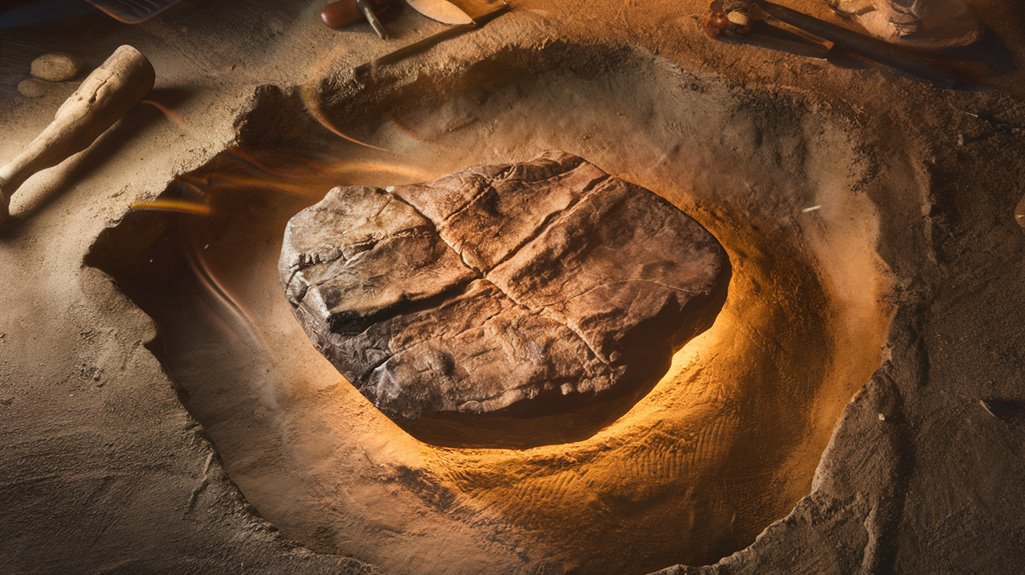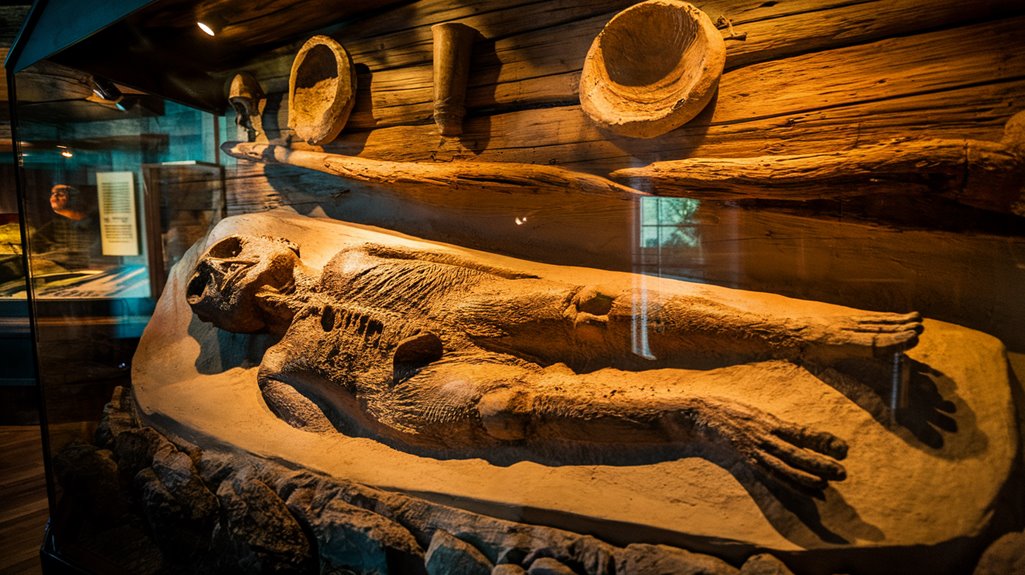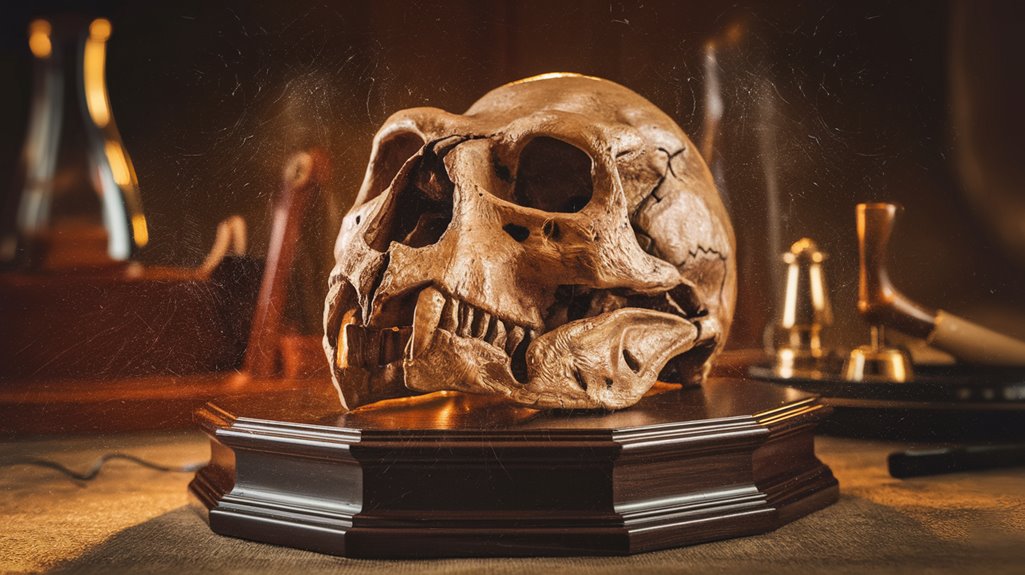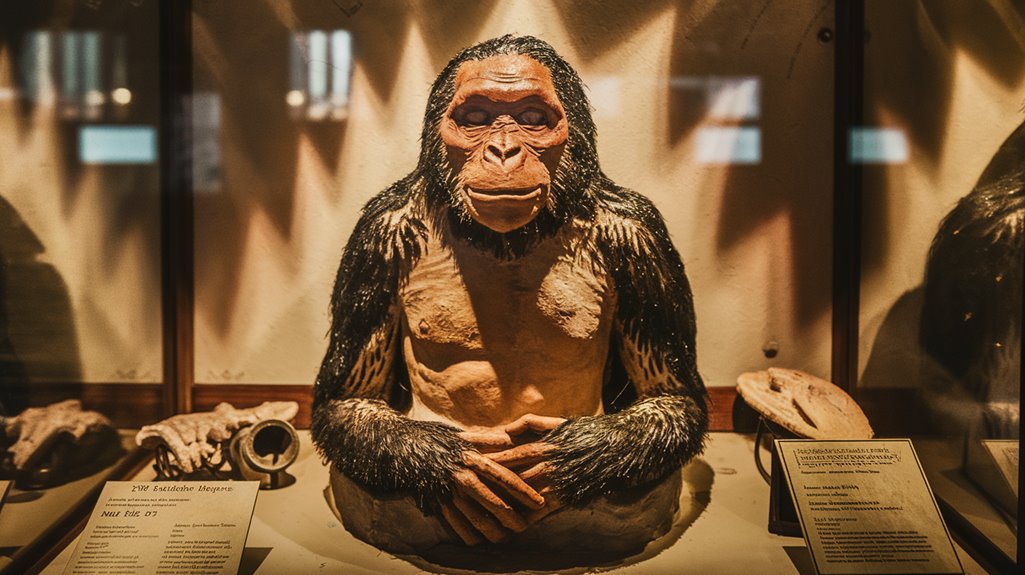The Piltdown Man Hoax: The Fake Fossil That Fooled the World
You've probably heard of scientific hoaxes, but none quite match the audacity of the Piltdown Man deception. For four decades, this carefully crafted fake fossil had the world's leading scientists convinced they'd found the missing evolutionary link between apes and humans. What you might not know is how this elaborate fraud managed to fool experts for so long, or why its eventual exposure changed the way we approach archaeological discoveries forever.
The Discovery That Shook the Scientific World

In 1910, amateur archaeologist Charles Dawson made what appeared to be one of the most significant archaeological discoveries of the twentieth century. While exploring a gravel pit in Sussex, England, he uncovered what seemed to be fragments of an ancient human-like skull.
The fossil significance grew when Dawson and Arthur Smith Woodward later found more bones, including a jawbone, teeth, and primitive tools. Further excavations in 1913 and 1914 yielded additional stone tools and animal fragments.
Some early skepticism arose as many researchers found that the specimen was inconsistent with other fossils discovered around the world.
The discovery's cultural implications were immense. Named Eoanthropus dawsoni, the specimen was proclaimed to be over 500,000 years old and represented a missing link between apes and humans.
You can imagine the national pride that swept through England, as the findings suggested their homeland was the cradle of human evolution.
Little did anyone suspect they'd been fooled by one of science's most notorious hoaxes.
Unraveling the Deception: How the Truth Came to Light
The grand deception of Piltdown Man wouldn't last forever. The truth revelation began in 1953 when fluorine testing exposed that the skull fragments were of vastly different ages.
Through forensic analysis, scientists uncovered a web of deliberate manipulation: artificially stained bones, filed-down teeth, and dental putty used to bind the pieces together.
You'll find the evidence was damning. X-ray imaging and microscopy revealed clear signs of tampering, while spectroscopy and DNA analysis pointed to a single forger who'd combined human and orangutan remains. The discovery had initially sparked nationalist pride in wartime England. Kenneth Oakley's groundbreaking tests revealed the fossils were only 50,000 years old, contradicting earlier claims of up to one million years.
The most conclusive proof came from carbon dating in 1959, which dated the skull at merely 600 years old – not the ancient specimen it was claimed to be.
The hoax finally crumbled after misleading anthropologists for 41 years.
The Masterminds Behind the Piltdown Man
After decades of investigation, Charles Dawson emerged as the primary architect of the Piltdown Man hoax, though several other prominent figures initially faced suspicion.
A thorough forensic analysis in 2016 revealed Dawson's consistent methods across multiple forgeries, from the use of dental putty to the deliberate manipulation of orangutan jawbones. Dawson's motives likely stemmed from his desire for recognition in the scientific community. His publication record of over 50 scientific articles demonstrated his persistent efforts to establish credibility despite his amateur status. Scientists wasted decades studying what turned out to be an elaborate fraud.
While theories of possible collaborators circulated, including suggestions that Pierre Teilhard de Chardin or Arthur Keith might've assisted, the evidence points to Dawson working alone.
The DNA analysis and chemical staining patterns across specimens from both Piltdown I and II sites share identical characteristics, reinforcing the conclusion that Dawson single-handedly orchestrated one of history's most notorious scientific deceptions.
Scientific Methods That Exposed the Fraud
Detecting the Piltdown Man fraud required multiple scientific breakthroughs that emerged long after Dawson's death.
Through advanced chemical analysis, scientists discovered that iron solution and chromic acid had been used to artificially age the bones, with staining patterns matching local gravels.
Forensic techniques revealed damning evidence: microscopic examination exposed file marks on teeth and scratches on the jawbone, while 3D imaging proved the fossils were actually a composite of orangutan and human specimens.
The orangutan was likely from Sarawak, Borneo, and the human skull was medieval in origin.
You'll find it interesting that high-precision measurements and comparative studies with genuine fossils confirmed what many had suspected: the entire collection was methodically prepared by a single perpetrator with knowledge of dental techniques.
The deception persisted as a cornerstone of human evolution studies until Dr. Kenneth Oakley used new testing methods in 1949.
Modern fluorine testing results definitively showed the bones were only about 50,000 years old, not the claimed 500,000 years.
Lasting Impact on Modern Archaeology

Perhaps most damaging to archaeological progress, Piltdown Man's hoax considerably delayed recognition of genuine hominin discoveries in Africa, including the Taung Child and Peking Man findings.
You'll find that this deception altered the course of archaeology and human evolution studies for over four decades, highlighting essential lessons about ethics in archaeology and scientific integrity.
The deceptive combination of a modified orangutan jaw with a human skull fragment demonstrates the elaborate lengths taken to perpetrate this scientific fraud.
New dating technology in 1949 ultimately exposed the fraudulent nature of the remains and changed the scientific consensus about their authenticity.
The hoax's lasting impact on modern archaeology is evident in three key areas:
- Heightened scrutiny of fossil discoveries and authentication methods
- Greater awareness of how cultural biases can influence scientific interpretation
- Increased emphasis on peer review and cross-verification procedures
Today, you'll notice that archaeologists approach new findings with more rigorous verification methods, acknowledging that scientific integrity must prevail over nationalist pride or preconceived theories about human evolution.











